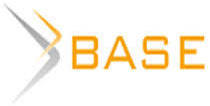Stage hermeneutics of J. Cranko's ballets in Stuttgart Ballet productions,
late 20th – early 21st centuries
The article investigates the work of John Cranko, who revolutionized stage direction in ballet theatre, transforming classical plots into psychological dramas where dance speaks louder than words, thereby creating a neoclassical direction in choreography. His landmark productions – “The Taming of the Shrew”, “Onegin”, and “Romeo and Juliet” – became benchmarks for narrative ballet. The research's relevance is due to the insufficient study of the evolution of J. Cranko's methods, expressed through a hermeneutic approach to interpreting sources using contemporary Stuttgart Ballet productions as an example. This work fills this gap by presenting an innovative methodology for analyzing choreographic text through the lens of literary dramaturgy and a comprehensive approach where all components of J. Cranko's unique directorial method engage in dialogue. This approach not only reveals the mechanisms of impact of J. Cranko's ballets but also provides tools for their modern interpretation. Furthermore, the research includes the historical and cultural context of the choreographer's style formation, a comparative analysis of different productions, and an iconographic method involving work with video recordings and photographic materials. J. Cranko's research results show a stylistic shift in his hermeneutic approach to literary sources, transforming from strict adherence to text to authorial reinterpretation. Traditional pantomime, replaced by a complex system of dance metaphors, preserved the artistic essence of his works while adapting them to changing aesthetic paradigms. The study's conclusions confirmed the initial hypothesis: authorial analysis of J. Cranko's ballets (“The Taming of the Shrew”, “Onegin”, “Romeo and Juliet”) and analytical works by other researchers identified and confirmed the evolution of his creative style within his hermeneutic direction, where drama is conveyed through plasticity, music, scenography, and composition.

















While nobody left any comments to this publication.
You can be first.
Adilov, A. (2024), “The influence of scenary and scenography on the performance environment”, Oriental Art and Culture, 1, 50-55. EDN: ZQHDXP
Agbasiere, Ch. (2020), Managing the Environment in Theatrical Creativity for Economic and Democratic Survival, Anambra State University. DOI: 10.2139/ssrn.3720093
Barrowman, K. (2017), “Philosophical Problems in Contemporary Art Criticism: Objectivism, Poststructuralism, and the Axiom of Authorship”, The Journal of Ayn Rand Studies, 17 (2), 153-200.
Bilge, F. Z. and Okan, S. (2024), “‘When in Music We Have Spent an Hour’: Choreographer John Cranko’s Recontextualization of The Taming of the Shrew as a Ballet”, Litera: Journal of Language, Literature and Culture Studies, 34, 443-456.
Dubskikh, T. M. (2015). “Method of interpretation in dance art”, Chteniye na Yevraziyskom perekrestke, Chelyabinsk, 24-25 sentyabrya 2015 g.: tretiy Mezhdunarodnyy intellektual'nyy forum [Reading at the Eurasian Crossroads, Chelyabinsk, September 24-25, 2015: Third International Intellectual Forum],Publishing House of the Chelyabinsk State Institute of Culture, Chelyabinsk, 112-116 (in Russ.).
Eseigbe, Ph. O. and Olugbenga, B. (2025), “Costume and Makeup as indispensable arts of theatre article info”, International Journal of Social Sciences, 4, 12-21.
“John Cranko” (2024), Bayerische Staatsoper [Bavarian State Opera] [Online], available at: https://www.staatsoper.de/en/biographies/cranko-john (Accessed 26 June 2025) (in Germ.).
“John Cranko's The Taming of the Shrew” (2022), TheatreHD [Online], available at: https://moscow.theatrehd.com/en/films/john-cranko-s-the-taming-of-the-shrew (Accessed 28 June 2025).
Harrison, G. (2025), “Onegin: A Hero Or A Villain?” Science and Education – Articles about the past, present and future of our world [Online], available at: https://en.scienceforming.com/10578018-onegin-a-hero-or-a-villain (Accessed 01 July 2025).
Karpenko, V. N., Karpenko, I. A. and Svoykina, L. F. (2015). “Choreography and artistic literature: intersection, mutual influence, development as a factor of special attention in modern ballet art”, Issues in Journalism, Education, Linguistics, 6, 1-6 (in Russ.). EDN: VWYZVB
Khokhlova, D. E. (2015), “John Cranko. On the History of Creating Full-Length Ballet Performances Based on Literary Plots”, Bulletin of the Vaganova Ballet Academy, 3, 185-192 (in Russ.). EDN: UFEUXH
Khokhlova, D. E. (2016), “Full-Length Plot Ballet in the Works of John Cranko (the ballet "Onegin" at the Stuttgart Theatre, 1965)”, Abstract of Ph.D. dissertation, State Institute for Art Studies Publishing House, Moscow, Russia (in Russ.). EDN: ZQHDXP
Khokhlova, D. E. (2018), “‘The Lady of the Camellias’ by J. Neumeier: Choreographic Interpretation of A. Dumas' Novel”, Problems of the theatre, 1-2, 79-92 (in Russ.).
Kostetskiy, V. V. (2020), “Anti-Huizinga: Another Philosophy of Play”, Voprosy Filosofii [Questions of Philosophy], 2, 196-204 (in Russ.). DOI: 10.21146/0042‒8744‒2020‒2-196-204; EDN: JNINUL
Kushnir, O. V. (2021). “P.I. Tchaikovsky's music in J. Cranko's directorial ballet ‘Eugene Onegin’”, South-Russian Musical Anthology. 4, 34-44 (in Russ.). DOI: 10.52469/20764766_2021_04_34; EDN: UDYVHH
Nikishov, Yu. M. (2020), “Eugene Onegin’s stages of evolution”, Two centuries of the Russian classics, 2 (4), 136-171. DOI: 10.22455/2686-7494-2020-2-4-136-171; EDN: QMRRLH
Nikolaenko, D. A. (2012), “Communicative potential of dance culture”, Scientific Notes of Taurida National V.І. Vernadsky University. Series: Philosophy. Culturology. Political sciences. Sociology, 24 (4), 176-184 (in Russ.). EDN: UMNMFR
Pegov, V. A., Gribkova, L. P. and Matveeva, A. V. (2022), “The concept of the ‘thinking body’ and its realization in scientific research”, Scientific Notes of P.F. Lesgaft University, 4, 569-572 (in Russ.). DOI 10.34835/issn.2308-1961. EDN: AXWQXJ
Percival, J. (1983), Theatre in My blood: a Biography of John Cranko, Franklin Watts, New York.
Podoroga, V. A. (1995), Fenomenologiya tela. Vvedeniye v filosofskuyu antropologiyu [Phenomenology of the body. Introduction to philosophical anthropology], Ad Marginem, Moscow, Russia (in Russ.). EDN: SZFABP
“Prokofiev, S. ‘Romeo and Juliet’: Ballet in Two Acts” (2020), Chelyabinskiy gosudarstvennyy akademicheskiy teatr opery i baleta imeni M.I. Glinki [Chelyabinsk Glinka State Academic Opera and Ballet Theater] [Online], available at: https://www.chelopera.ru/plays/about/romeo-i-dzhuletta-2020/brief/ (Accessed 28 June 2025).
Rakov, V. P. (2012), “Hermeneutics of myth and dance”, Culture and Art, 4, 84-89 (in Russ.). EDN: PXANJT
Romm, V. K. (1994), K metodike paleokhoreograficheskogo analiza [On the methodology of paleochoreographic analysis], Publishing House of Novosibirsk State Technical University, Novosibirsk, Russia (in Russ.).
Sokovikov, S. S. (2022), “The Interplay of Ballet and Literature”, Journal of Siberian Federal University. Humanities & Social Sciences, 15 (1), 115-123. DOI: 10.17516/1997-1370-0881
Van Qishen (2023), “Current problems of art psychology”. Mission Confessions, 12 (3), 24-27 (in Russ.). EDN: SEDWNC